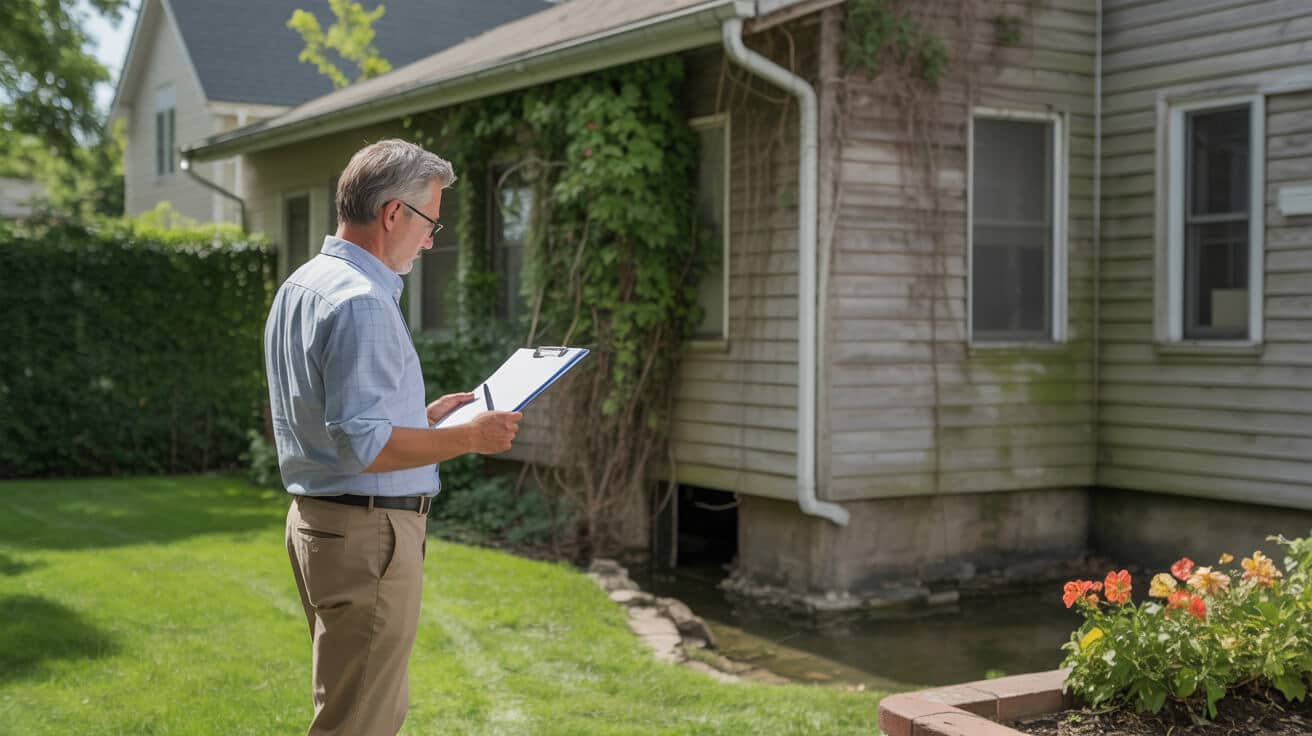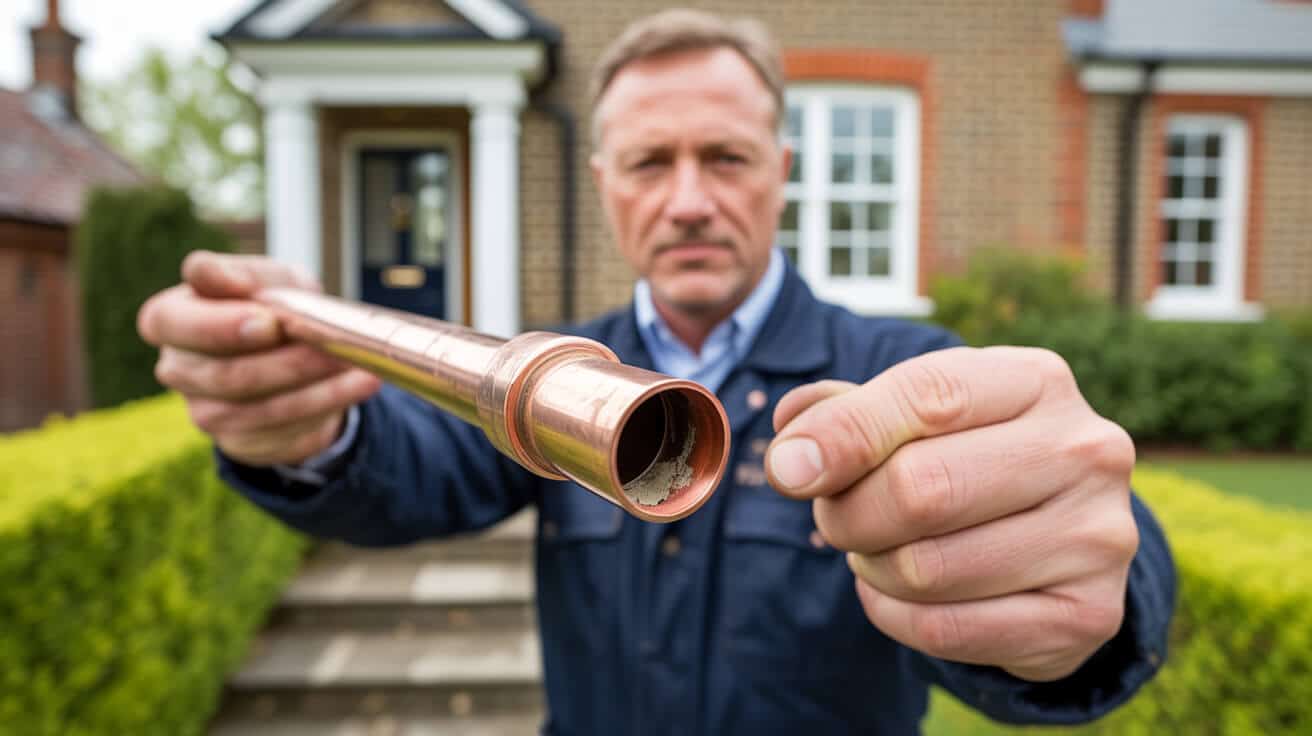 Landlord Guide Meeting Uk Building Regs for Plumbing & Heating
Landlord Guide Meeting Uk Building Regs for Plumbing & Heating
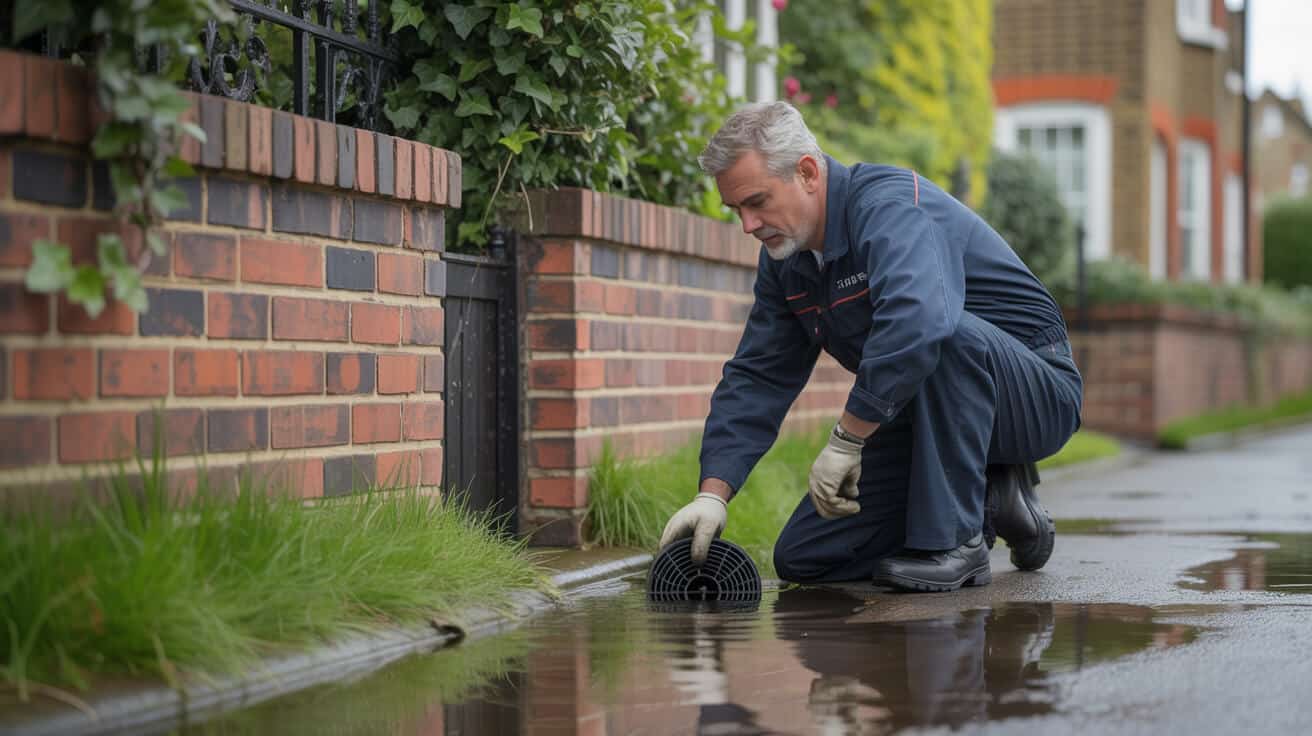
Why Do UK Landlords Struggle With Plumbing and Heating Compliance?
Managing a property portfolio in the UK now means more than just keeping the pipes flowing or the heating running. If you’re a landlord, the sheer weight of regulations around plumbing and heating can turn a well-run property into a stress minefield overnight. Compliance isn’t just about ticking boxes; it’s about running a business that’s always audit-ready, even when the rules and paperwork seem to shift by the month.
A missing certificate can turn a profitable property into a regulatory headache, overnight.
Most landlords care deeply about safety and service—the real trouble usually begins with missed paperwork, a forgotten inspection log, or an engineer who fails to provide a digital certificate on demand. It’s no longer enough to “have had the work done”: authorities, insurers, and letting agents demand proof—often before a tenant moves in or when an incident suddenly puts you on the spot.
What’s changed? Built-in digital evidence is the new bottom line. Successful landlords aren’t just plugging leaks—they’re digitising everything, clarifying who did what, and showing that every part, fix, or upgrade is done to code and ready to prove. Those who treat compliance as a routine, not a panic, avoid the fines, reputation damage, and days wasted in paperwork scavenger hunts.
This guide is your step-by-step route to systemising plumbing and heating compliance as a source of confidence, value, and trust—so that every inspection, claim, or audit is handled before it even begins.
The Slow-Burn Risk Most Landlords Overlook
It’s rarely shoddy work that gets you fined. More often, it’s a lost certificate, an undocumented repair, or an out-of-date logbook. These are avoidable gaps that multiply your risk, and yet most landlords only spot them when the penalty letter lands. The new reality: compliance failures are born from missing records, not missing effort.
What Are the Core Compliance Duties for UK Landlords?
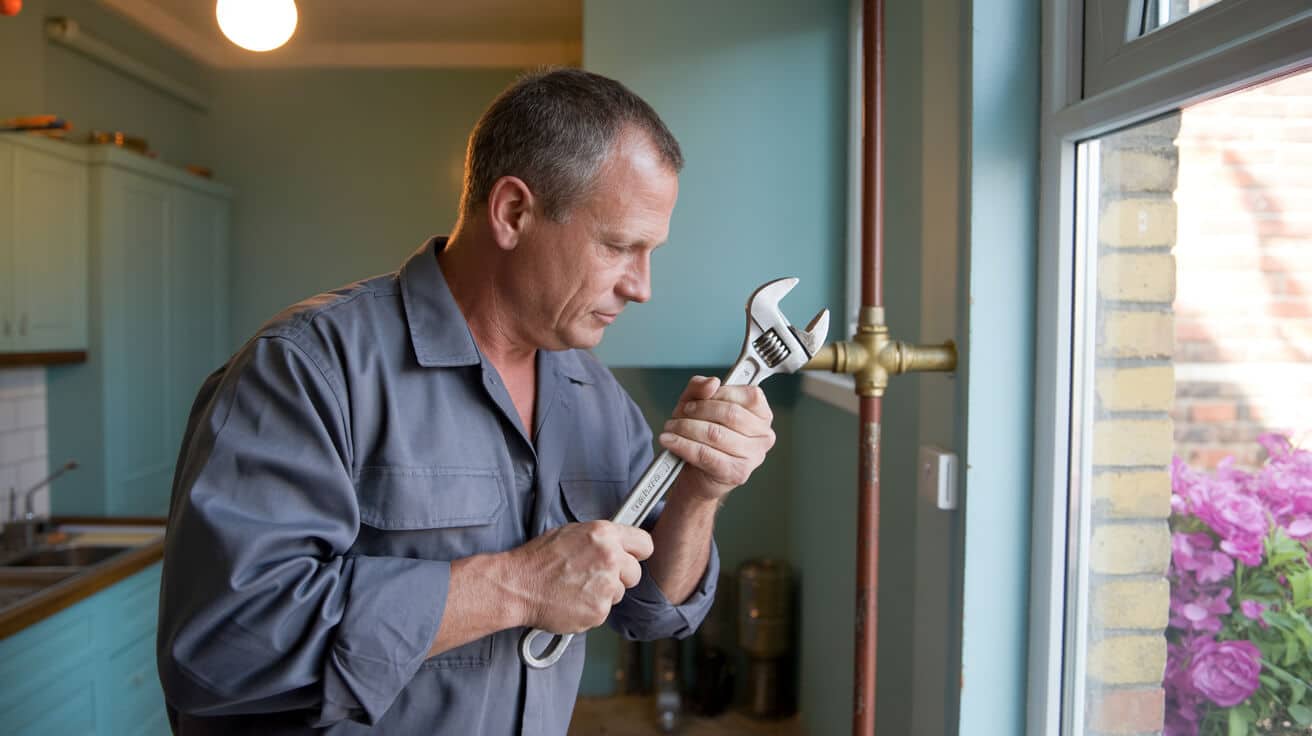
If you own or manage rental property in the UK, compliance isn’t optional—it’s a functional part of protecting your income, property, and tenant relationships. Think of the regulations as your “official playbook”: you’re either ready for inspection at any moment, or gambling your rental income on hope.
- Annual Gas Safety (CP12): You must provide a valid Gas Safe certificate every year—within 28 days to tenants, and before any new let. A missing or expired CP12 isn’t a small slip; it’s a prosecutable offence under the Gas Safety (Installation and Use) Regulations 1998, with court-imposed penalties that reach far beyond a plumber’s invoice.
- WRAS Materials and Water Regulations: All installation and repair work—no matter how minor—must use WRAS-approved components. Anything “off label” risks water contamination, invalid insurance, and challenge from local authorities (Water Regs Advisory Scheme 2023). You can’t prove safety without the right paperwork, and today, brand and part numbers are as important as visible pipework.
- Legionella Risk Assessment: By law, you must undertake and document a Legionella Risk Assessment annually, especially for properties with storage tanks or shared supplies. Landlords who skip this risk legal action and formal notices, especially if tenants include vulnerable groups.
- Heating and Hot Water Assurance: All heating and hot water systems must work, be safely installed, and be kept in repair. Documentation must confirm that all mandatory living standards are met at all times—failure is a “disrepair” breach under the Housing Act.
- Record-Keeping: Compliance now demands all certificates, reports, commissioning notes, and photos be safely stored for two years or more, usually in a cloud-based system where you can produce them at short notice for agents, councils, or insurers.
- Ongoing Regulation Review: Council auditors now expect periodic evidence that you track new requirements—like minimum pipe insulation, programmer upgrades, or cylinder checks—during routine servicing.
Most council fines in 2023 were triggered by late or missing digital certificates, not poor-quality work (ARLA, 2023).
The landlords who survive audits unscathed digitise their compliance workflows; every job, every certificate, and every upgrade is logged, timestamped, and ready to prove value. This is the difference between controlled, stress-free tenure and costly surprises.
How to Turn These Rules Into a Protective Habit
The best landlords make compliance a workflow, not a paperwork scramble. Every engineer must close their job by uploading certificates and photos. Maintenance cycles are run like clockwork. Audits, when they happen, become tick-box affairs rather than panic events.
Which Documents and Certificates Protect You From Fines and Disputes?
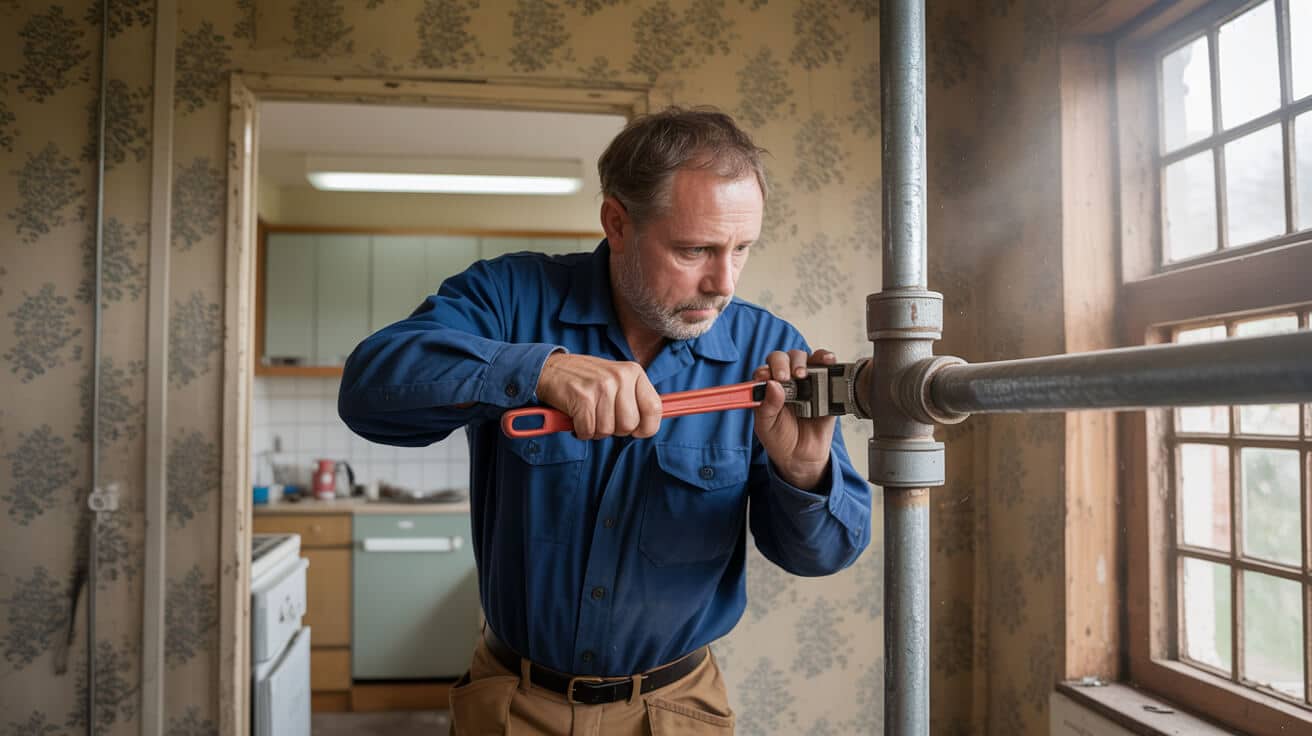
It’s not about the folder in the kitchen drawer—it’s about instantly accessible, legally robust, digitally stored proof. Your “compliance shield” is only as strong as your worst gap.
The Core Compliance Documents Every Landlord Needs
- CP12 Gas Safety Certificate: – Annual renewal, digital backup, tenant delivery within 28 days.
- Benchmark Logbooks: – One per new heating or hot water instal; vital for any future claims or disputes.
- Legionella Assessment Log: – Annual action, with digital temperature readings and a dated log.
- Energy Performance Certificate (EPC): – Renew after significant upgrades; required before new lets.
- Photo Evidence: – For all insulation, upgrades, smart control fitting, or repairs on water, heating, and sanitary systems.
- Cloud-Indexed Storage: – Every certificate, photo, and service log housed by property and year—makes retrieval a five-minute task, not a two-week scramble.
| Key Proof | How Often | Protects You From |
|---|---|---|
| CP12 Gas Safety | Annually | Council fines, hold-over disputes |
| benchmark Logbook | Every major instal | Warranty/claims rejection |
| Legionella Assessment | Annually/voids | Health, legal risk |
| EPC Certificate | 10 years/upgrade | Letting bans, grant refusal |
| Photos (digital) | Every engineer job | Proof for audit, insurance, claims |
| Cloud Storage | Ongoing | Lost records, forgotten evidence |
A compliant landlord can answer almost any council or tenant request immediately, with audit-proof logs showing repairs, upgrades, and code compliance. Those who rely on “file piles” at home usually find their luck runs out when it matters.
What About Engineer Credentials?
Digital screenshots or PDF downloads showing Gas Safe, WaterSafe, or G3 registration are now valid evidence in most audits. Make it habit—every job, every time.
What Has Changed for Plumbing and Heating Compliance in 2023/24?
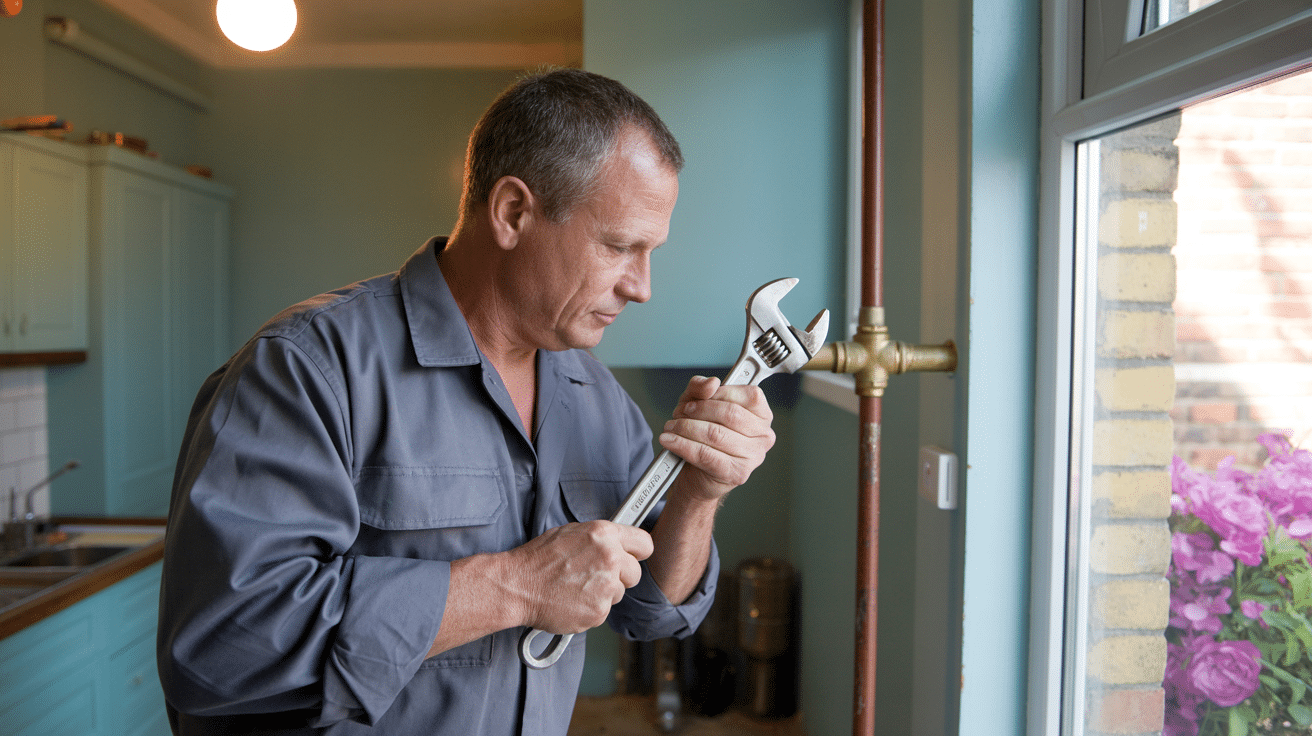
Regulation isn’t standing still. Several key updates mean that “what counted last year” could leave you exposed today.
The New Boiler Commissioning Standard
Every boiler instal or replacement, domestic or commercial, now requires a digital record showing flow temperature capped at 55°C—photo proof, as-built commissioning notes, and model/serial detail. Failure to document this can invalidate warranties and grants.
Minimum Pipe Insulation Mandate
All accessible hot water and heating pipework (15 mm diameter or above) is now required to carry 13 mm of insulation, with dated photo log and clear file links to every property. Auditors and EPC assessors are trained to spot missing lagging and instantly flag non-compliant works.
Mandatory Heating Zoning & Programmable Controls
Properties—especially HMOs and multi-units—now need independent, programmable heating controls for each let or zone installed. Councils and grant bodies may demand photos and programming logs on request.
Legionella & Anti-Scald: Enhanced Proof
After any property is void, or after upgrades/repipes, you must log hot/cold water temp checks, prove any new or altered TMVs (thermostatic mixing valves) are set, and note any anti-scald protection. This step now appears on most audit checklists.
Digital photos and time-stamped engineer notes are now the baseline for compliance audits in the rental sector.
By treating every service call, upgrade, or reactivate as a new compliance opportunity—with proof to match—you stay years ahead of audit risks and unlock faster access to grant funding and EPC score improvements.
How Can You Build a “Compliance-First” Routine Into Maintenance?
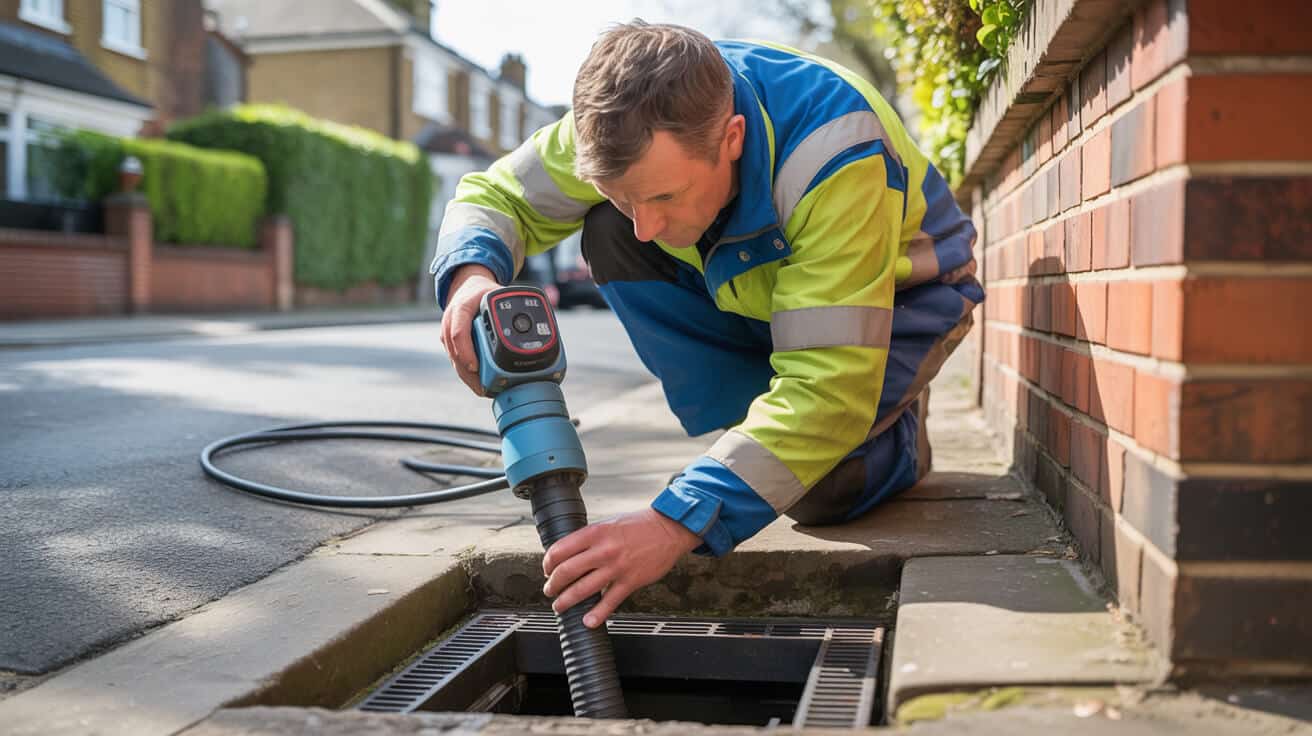
You can’t “scramble to comply” when the inspector calls and expect to pass. The only way to ensure smooth audits is to bake compliance into your property routines—making it a workflow, not an afterthought.
Real-World, Audit-Proof Maintenance Steps
- Automated Calendar System: Use a cloud calendar that tracks every certificate renewal, Legionella risk review, and EPC expiration for each property. Get reminders ahead of time—avoid last-minute scrambles.
- Engineer Upload Practice: After every job—repair, upgrade, or check—require your plumbing or heating engineer to upload the digital certificate, part codes, photos, and a signed completion note before you mark the work as closed in your system.
- Pre-Tenancy Final Checks: Flush all outlets, check hot/cold delivery and TMV safety limits (particularly for families with children or elderly tenants), and create a brief, walk-through video for reference. Instant proof of compliance and safety, ready for any challenge.
- Immediate Certificate Sharing: As soon as digital certificates drop, forward them to tenants and agents. It proves professionalism and starts the tenancy on a solid foundation.
- End-of-Tenancy Report: Ask outgoing tenants to confirm system working order—builds future audit defence if later disputes or claims arise.
Building this into every repair or check transforms compliance from a panic into a source of confidence—your evidence never lapses, your reputation climbs, and your rental operation runs like a business, not a guessing game.
What Are the Most Common Compliance Gaps That Cost Landlords?

It’s not always neglect or “cowboy” work that leads to penalties—it’s the ordinary slips that go unseen until too late.
The “Invisible Work” Trap
Jobs done with no photo or missing paperwork—like a swapped radiator valve, insulation added to pipes, or even a repaired ballcock—are “invisible” when the council or insurer looks for proof. These gaps can void insurance, halt rent reviews, ruin claims, or trigger formal notices.
Lapsed or Missing Hot Water Safety Checks
After an unvented cylinder replacement (G3 job), you must show a safety log and photo proof every year. Many landlords lose track after the first anniversary, exposing them to fines or insurance rejection if issues emerge.
Forgetting to Re-Document EPC and Upgrades
Post-upgrade, your EPC must be retested to reflect new systems or controls—otherwise, you may lose grant eligibility or have rent rises blocked. Letting this lapse is often an accident, but it stalls cashflow and compliance alike.
Engineer Credentials Not Verified
Trust, but verify. Take a screenshot of every engineer’s registration before and after work (Gas Safe, G3, WaterSafe, TrustMark), and keep it in your logbook. These are accepted audit records for most councils and insurers.
An undocumented repair is a compliance blind spot that can erase a year of diligent work.
If you make digital evidence a condition for every job (even a basic repair), you halve your exposure to disputes and enforcement. It’s this discipline that separates audited, profitable businesses from risk magnets.
Which Energy and Efficiency Upgrades Add Real Value to Compliance?
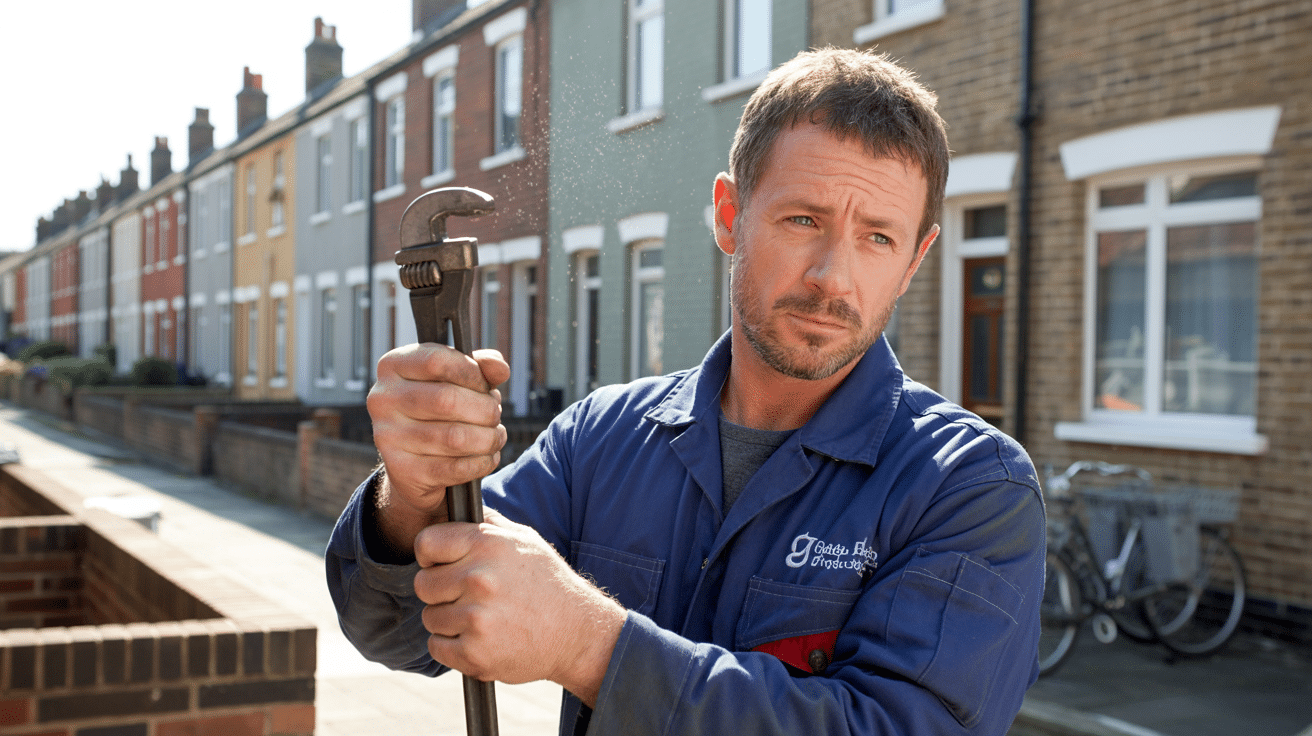
Upgrades driven by regulatory compliance can also drive income, tenant satisfaction, and future-proof you for fast-changing standards. Let’s break down the ones that deliver both value and audit cover.
- Pipe Lagging: Every time pipework is renewed or installed, ensure WRAS-approved 13 mm pipe insulation is fitted, photographed, and the engineer files a dated completion note. This is now a routine EPC point-scorer.
- Programmable Smart Heating Controls (OpenTherm): For new boilers, landlords should choose programmable stats (Nest, Tado, Vaillant vSMART) with OpenTherm support. These save energy, future-proof homes for regulation, and support grant or insurance eligibility. Insist on a screen photo during commissioning for your audit file.
- Zoned Heating Controls: Especially for HMOs or multi-unit dwellings, comply by fitting programmable thermostats for each heating zone. These cut energy bills, avoid fines, and can improve long-term tenant retention.
- Cylinder Insulation & Upgrades: Upgrading or installing a hot water cylinder? Ensure it comes with factory-fitted insulation, logbook, and engineer photo, then scan and file the documentation online.
- Fast EPC Reviews: Whenever you upgrade or instal key systems, book a new EPC assessment. This not only unlocks grants but locks in higher rents and smoother lettings.
| Upgrade | Boosts Value | Needed Proof |
|---|---|---|
| Pipe Insulation | Yes | Dated photo, instal note |
| OpenTherm Smart Stat | Yes | Engineer screen cap/notes |
| Zoned Controls | Yes | Commissioning log, zone proof |
| Cylinder Insulation | Moderate | Photo, warranty, logbook |
| EPC Review | Essential | Certificate post-upgrade |
Upgrading systems becomes a compliance win when each improvement is evidence-rich, digitally stored, and easy to show at audit. The cost of missing this is not just fines or grants lost—it’s losing time fighting about what happened, and when.
How Does Choosing Reputable Plumbers Prevent Fines and Reduce Tenant Friction?
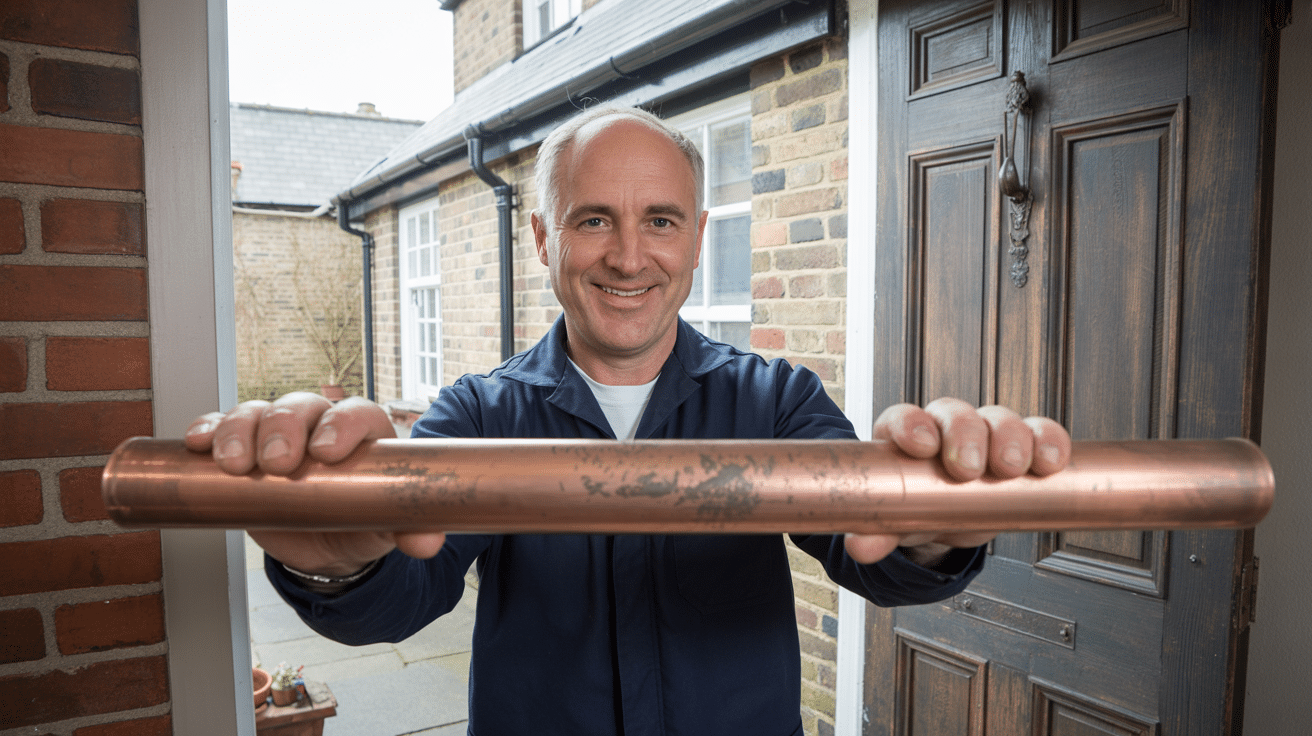
The difference between stress-free rental operations and endless compliance nightmares often comes down to the calibre of your plumbing and heating professionals. Not all engineers are created equal—and today, a reputable, WRAS-accredited plumber is your best defence against hidden risks and unhappy tenants.
Habits of a Compliance-First Plumbing Partner
- Credential Proof, Every Visit: Demand verifiable digital credentials from any engineer working in your property, before and after the job. Insist on screenshots or direct links to Gas Safe, WaterSafe, TrustMark, or G3 records—these serve as fast, council-accepted evidence if queried
- Job Sheet and Photo Records: Every engineer must complete a repair/instal note with part identification, photos, and a brief description of the methods used. Avoid pros who resist this—missing paperwork leaves you financially exposed.
- Routine Self-Audits: Twice a year, review your property folder: every CP12, legionella log, EPC, insulation photo, and instal sign-off should be present, date-labelled, and double-checked for gaps.
- Tenant-Facing Transparency: After each job, immediately send the certificates, photo records, and job sheets to your tenant (or agent). This builds trust, supports smooth handovers, and is the easiest way to avoid “no notice/no repair” arguments.
- Clear Quotes/Guarantees: No more verbal “done for you” work—itemise all jobs, materials, compliance rules, and warranty periods in writing, every time. This protects you from scope disputes and sets the tone for reliable maintenance.
Compliance culture is strongest when you, your tenants, and your service team share detailed records and open communication.
When you proactively demand—and verify—this level of diligence on every job, you attract better tenants, dodge audit disasters, and minimise downtime for repairs.
What Sets the Plumbers 4U Compliance Pack Apart for Landlords?
Landlords searching for a true “set-and-forget” compliance solution find Plumbers 4U offers more than just tradesmen on call—it’s a full digital defence system for every property in your care.
The Systematic, Evidence-Driven Approach
- Digital Gas and Legionella Certificates: Every job comes with instant cloud-stored certificates and risk assessments; you’re never at a loss when a council, agent, or insurer calls.
- Benchmark and Warranty Records: For all instals and major upgrades, complete benchmark logs, warranty info, and model/serials are signed, scanned, and uploaded to your client folder.
- Upgrade and Repair Imaging: Every improvement—pipe lagging, zoning, smart control—gets digital image proof, signed by the engineer and tied to your property database.
- Fast-Track Document Delivery: Certificates, photos, and compliance logs are sent to you and your tenant within hours—not days—of job completion.
- Aftercare and Alerts: Scheduled reminders, support for troubleshooting, maintenance tips, and walk-throughs are part of the package, not an add-on.
The real win? You never have to “find” evidence again—it’s built as the job is done, forming a living audit trail that protects your business.
The Hector Gauge Quality Standard
- All work is performed or overseen by WRAS, WaterSafe, and G3 accredited engineers—no ambiguities, no shortcuts.
- Every record is time-stamped, cloud-backed, and available on demand.
- Pricing and job specifications are transparent: every quote details the scope and mapped compliance codes.
- Clients get proactive follow-up—job completion walkthroughs and routine maintenance advice, not just a sign-off.
This approach means fewer disputes, smoother audits, more reliable tenancy retention, and stronger asset value for your portfolio.
Secure Audit-Ready Confidence With Plumbers 4U Today
Running successful rental properties is about more than reacting to leaks or boiler failures—it’s about protecting your reputation and investment with systems that always stand up to inspection.
Plumbers 4U and Hector Gauge have engineered a landlord compliance pack that transforms every routine repair, upgrade, and planned maintenance into an instant asset. That means digital evidence, WRAS and WaterSafe credentials, complete documentation, and support that follows through after the job is done—all built to assure that your audit trail, property value, and tenant relations are always secure.
Don’t gamble your compliance on memory or hurried paperwork—make it automatic. Book your compliance assessment or join the Plumbers 4U landlord pack and trade up to a business protected by the right experts, the best systems, and a proactive ethos that keeps your investment future-focused and audit-proof—all year round.
Frequently Asked Questions
What are the most urgent 2023–2024 UK plumbing and heating changes that landlords can’t ignore?
Landlords in the UK now face a different world—annual checks aren’t enough. The 2023–2024 compliance update demands evidence-backed action on every property you let. Expect enforcement that checks not just pipes, but also your paperwork—digital trails, insulation proof, and engineer accreditation logs—before you get the green light for rental, grant, or insurance.
Recent council audits show over 40% of EPC failures now hinge not on builder’s work, but on lagging gaps: pipes exposed without 13 mm insulation, missing date-stamped photos, or unclear engineer certifications. If you haven’t logged pipe lagging along every exposed run (over 15 mm), the absence alone can block your tenancy renewals or funding. smart controls, zone stats, and capped boiler flow temperatures aren’t “nice-to-haves”—they’re legally required for most upgrades and new fits. Each instal, service, or emergency repair now leaves a digital fingerprint or leaves your asset exposed.
“If you can’t prove it, it’s as if you never did it. Auditors check apps, photos, and engineer IDs before they even touch the pipe.”
Which issues create instant compliance risk?
- Pipe insulation missing or undocumented: Rejects EPC or MEES assessments.
- No digital log or shareable proof of engineer ID: Denies access to insurance and grant schemes.
- Legionella risk logs unfiled: Triggers spot fines, tenancy delays, and extra visits.
- Installers use unapproved parts (WRAS non-verified): Nullifies compliance and sometimes warranties.
The compliance game isn’t about checking a box once a year—it’s building a paper-and-cloud safety net, property by property. That’s how you keep your letting licence, avoid five-figure fines, and actually win at grant and funding rounds. If your files sit half-complete or analogue, the exposure builds quietly—until an audit, claim, or tenant complaint puts your portfolio under the microscope.
How do you action these new rules immediately?
Get your installer or property manager to send a full digital photo file (lagging, stats, part labels) and validation of their Gas Safe, WRAS, or G3 credentials every time. Set a monthly or quarterly cloud folder check—if it’s not there in writing, it won’t count in court or audit. No more last-minute sprints: instant reporting is the new compliance standard.
How do new engineer competency rules and digital proof shape your landlord obligations for 2023–2024?
2023–2024 enforces an “evidence-first” policy across UK lettings. Gone are the days when a quick reference or verbal ID passed muster—every engineer’s certification must be time-stamped, digital, and attached to each job. Letting agents, insurers, and auditors want not only who did the work, but when they were last vet-checked. This traceability builds into your property’s digital twin—miss a log, and your compliance is defenceless.
For gas jobs, cross-check the engineer’s card number at the (https://www.gassaferegister.co.uk), snap the time-stamp, and upload it—auditors rely on digital screenshots rather than trust. Unvented cylinder work now means recent G3 PDFs are filed for both instal and every annual visit. WRAS/WaterSafe verification is a bare minimum for all new valves and WC instals—include the certificate scan in your compliance archive.
TrustMark isn’t just for energy upgrades: any landlord tapping retrofits or grant programmes must only use TrustMark contractors, with paperwork flowing before the first tool swings and after every progress milestone. Agencies that skip or delay file uploads are losing claims and letting opportunities across the country.
“You can no longer ‘show the card’—every certificate lives on your digital shelf, audit-ready.”
How should landlords adapt their workflow?
- Bank PDFs, screenshots, and registry links with time/date for Gas Safe, WRAS, and G3 for every job, minor or major.
- Letting or block managers: switch from loose checklists to real-time, shareable folders where every cert is one tap away.
- Refuse to proceed with work if even one segment of ID or training proof is missing. Just “knowing” your guy isn’t enough under the law.
Audit resilience is a system, not a favour—and digital proof is proof of all, for every agent and every job.
Which records and documentation actually secure audits, insurance, and tenant trust under the new compliance regime?
Physical fixes fade—documentation endures. In 2024, councils and insurers see the digital record before they ever inspect pipework. The modern audit sees more landlords missing out from incomplete paperwork than from maintenance errors—a missed certificate, photo, or time-stamped engineer ID routinely freezes insurance, EPC, or letting renewals.
You’ll be expected to present:
- Two-year digital history of CP12 Gas Safety Certificates—no gaps, each with address and appliance roster.
- WRAS/WaterSafe/TrustMark/Benchmarked installer certifications: , filed as PDFs with clear expiry and renewal links.
- Full Boiler Benchmark/service logs, photo-documented at every part replacement and with engineer signature trailing into your digital archive.
- Annual legionella logs: (for tanked or low-use systems), with temperature records and mitigation steps, even if no previous issue flagged.
- Time-stamped, labelled photos documenting all insulation, stats, and energy upgrades for each tenancy reset or inspection round.
- EPC present and correct, with corresponding improvement files: including pipework photos.
“In the audit room, it’s your folder, not your fixtures, that keeps doors open and insurance working.”
What’s the benchmark for foolproof property documentation?
Organise a dedicated digital folder per property: every cert, job image, or risk log must be accessible, dated, and labelled clearly as you accrue them. Cloud backup is non-negotiable. Secure reminders for annual checks transform “Oh no, where is that file?” into “Here it is—count it twice.”
Documentation earns you audit passes, supports tenant trust, unlocks funding—and keeps surprises off your desk.
What penalties, bans, and reputational damage follow if landlords fall short on new UK plumbing and heating standards?
The fines get headlines—but it’s the speed and scope of enforcement that catch most landlords off-guard. The new approach is digital-first: misses found by absence in your folders, not by someone crawling under a sink. A missing CP12, insulation photo, or up-to-date installer credential means instant red flags for insurers, local authorities, and sometimes tenants themselves, now that digital access is routine.
Expect:
- Civil fines from £10,000 to £30,000: per address or per breach—often stacking for each missed certificate or job log in a multi-let.
- Letting bans: that flag your property on council portals and across aggregator sites—not just for technical failures, but simple document gaps.
- Insurance voidance: Paid repairs by unqualified contractors or with missing paperwork? That’s an instant “out” clause for most policies.
- Rent clawbacks (up to 12 months): for non-proven compliance during disputes.
- Portfolio reputation hit: Names are flagged on landlord blacklist sites and “rogue register” updates found by future tenants, lenders, or buyers.
“A landlord’s biggest risk isn’t burst pipes—it’s an empty compliance folder. That’s where fines, lost income, and digital black marks begin.”
Which mistakes most commonly trigger these outcomes?
- Skipped or incomplete digital logging of annual checks (gas, EPC, legionella).
- Failing to update engineer credential files before or after works.
- No labelled photo logs for pipework or controls in each property.
- Lags in passing compliance records to tenants/agents within the legal deadline.
Master the folder, pocket the savings—slip up, and the system will find you before you ever see an inspector.
What is the most reliable routine and toolkit for year-round landlord compliance?
Process beats panic—compliance is 90% rhythm, 10% rescue. Landlords who transition to a repeatable, digital-first routine never wait for disaster to get organised. Treat every job, inspection, and upgrade as a compliance checkpoint and update your archive the moment the work is done.
Landlord workflow for audit-proof compliance:
- Before a job: Confirm and store digital credentials (Gas Safe, WRAS, G3, TrustMark). Refuse incomplete files.
- During works: Every engineer—take, label, and send photos of insulation, stats, valve swaps, or any new kit. App screenshots back up smart control instals.
- After the job: Tidy up the digital paperwork; upload new certificates, invoices, and photo logs same day.
- Annual cycle: Set auto-reminders for CP12 renewals, legionella checks, and required upgrades at least a month ahead—don’t let anything lapse.
- Tenant & agent flow: Deliver new certs or links to tenants and letting agents within the legal 28 days (or less)—and use read receipts.
- Property manager upgrades: Push for cloud-based packs from your agent, not scattered emails—everyone needs live access.
“The gap between a compliant landlord and a panicked one is usually a single missing file—don’t let yours be the property that makes the audit list.”
The modern compliance toolbox
- Property-based cloud folders with access for you, agents, and engineers.
- Digital checklist of every must-have certificate, risk log, and upgrade.
- Relationships with accredited providers who supply docs and digital photos by default.
Audit confidence is won one routine at a time—build yours now, and let regulatory change pass you by.
How does choosing Plumbers 4U make landlord compliance stress-free and reputation-building?
Let’s cut through it: the best landlords aren’t just audit-resistant—they’re audit-transformers, using compliance for trust, speed, and better tenancies. Plumbers 4U puts you on that path by coupling first-class work with digital trail discipline, every step.
Every job by our Gas Safe and WaterSafe-accredited team triggers a full photo archive, certification package, and compliance summary file—email, cloud, and real-world ready. Our proactive reminders keep your annual cycles unbroken, uploading before you ever get a compliance notice. When rules shift, our system nudges you with updates and upgrade offers, so you’re never blindsided or left chasing a file.
The real difference? Better tenants, swifter lets, and zero last-minute insurance stress—your properties get a transferable, up-to-date compliance storey that stands up anywhere, any time.
“You don’t just pass audits—you build reputation and get first in line for grants and high-value tenants.”
If you want every asset logged, every upgrade documented, and every audit turned from threat into formality, join landlords across the UK who trust Plumbers 4U for compliance mastery. Book your compliance mapping now and turn regulation into your next advantage.

